Match the molecules given in column I with their shapes given in column II and mark the appropriate choice.
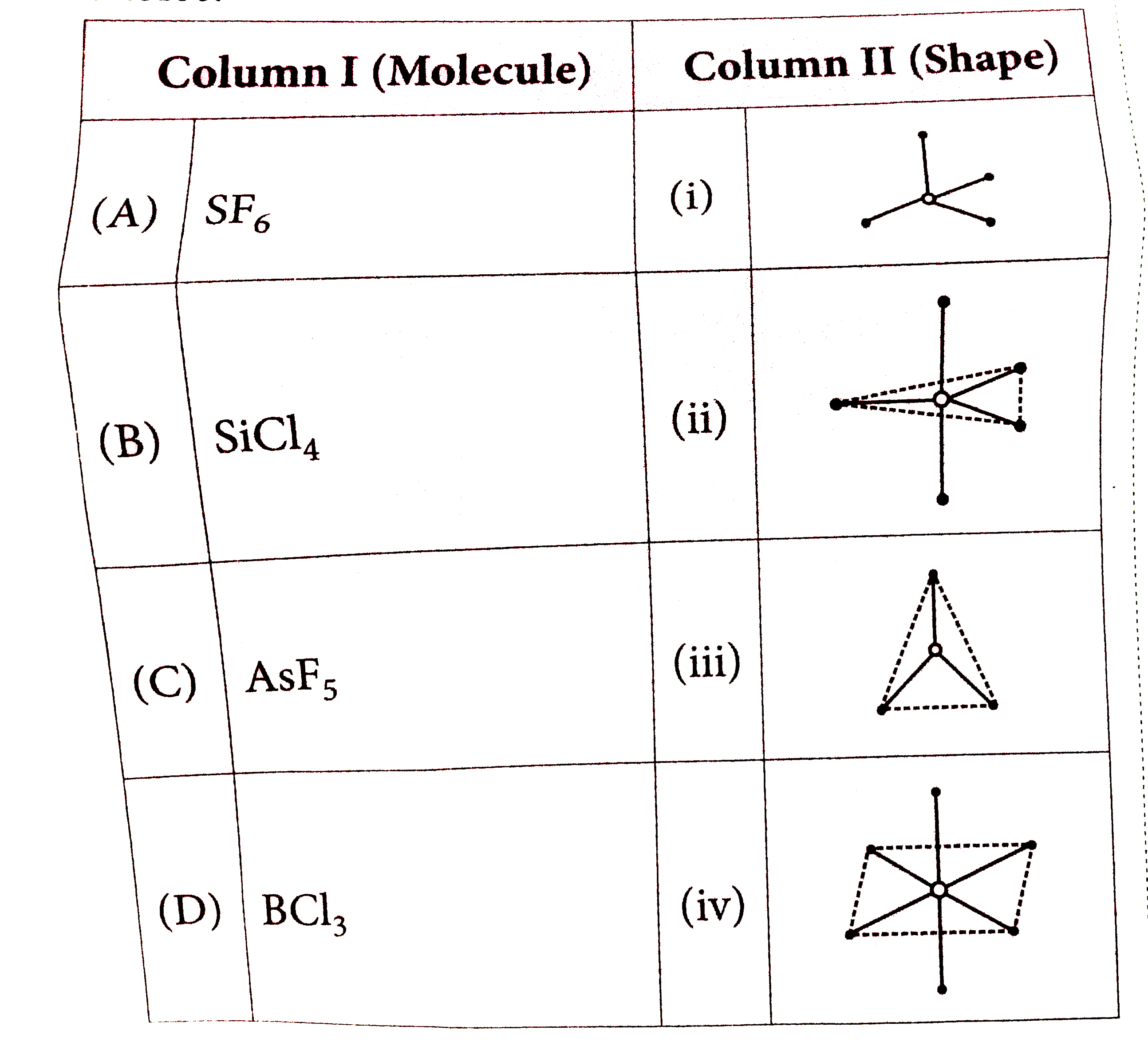
(A)→(iv),(B)→(ii),(C)→(iii),(D)→(i)
(A)→(iv),(B)→(i),(C)→(ii),(D)→(iii)
(A)→(iii),(B)→(i),(C)→(ii),(D)→(iv)
(A)→(ii),(B)→(iii),(C)→(i),(D)→(iv)
The correct Answer is:B
(A) SF6 - Octahedral
(B) SiCl4 - Tetrahedral
(C ) AsF5 - Trigonal bipyramidal
(D) BCl3 - Trigonal planar
Topper's Solved these Questions
- CHEMICAL BONDING & MOLECULAR STRUCTUREBOOK - NCERT FINGERTPS ENGLISHCHAPTER - CHEMICAL BONDING & MOLECULAR STRUCTUREEXERCISE - Valence Bond Theory
7 Videos
- CHEMICAL BONDING & MOLECULAR STRUCTUREBOOK - NCERT FINGERTPS ENGLISHCHAPTER - CHEMICAL BONDING & MOLECULAR STRUCTUREEXERCISE - Hybridisation
15 Videos
- CHEMICAL BONDING & MOLECULAR STRUCTUREBOOK - NCERT FINGERTPS ENGLISHCHAPTER - CHEMICAL BONDING & MOLECULAR STRUCTUREEXERCISE - Bond Parameters
13 Videos
- CLASSIFICATION OF ELEMENTS AND PERIODICITY BOOK - NCERT FINGERTPS ENGLISHCHAPTER - CLASSIFICATION OF ELEMENTS AND PERIODICITY EXERCISE - Assertion And Reason
15 Videos
Similar Questions
Match the constants given in column I with their values given in column II and mark the appropriate choice.

View SolutionMatch the isomers given in column I with their names given in column II and mark the appropriate choice.
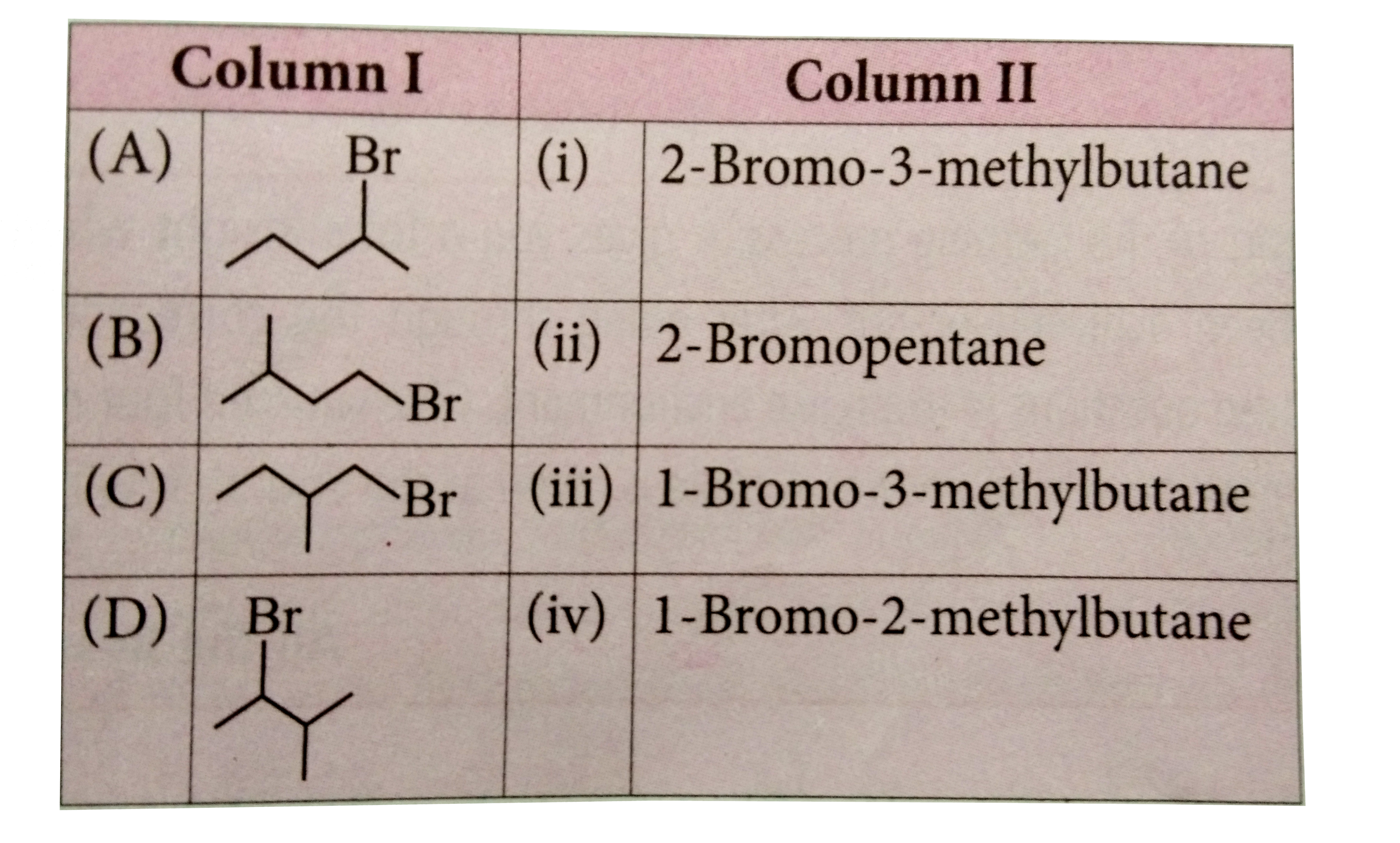
View SolutionMatch the compounds given in column I with the IUPAC names given in column II and mark the appropriate choice.
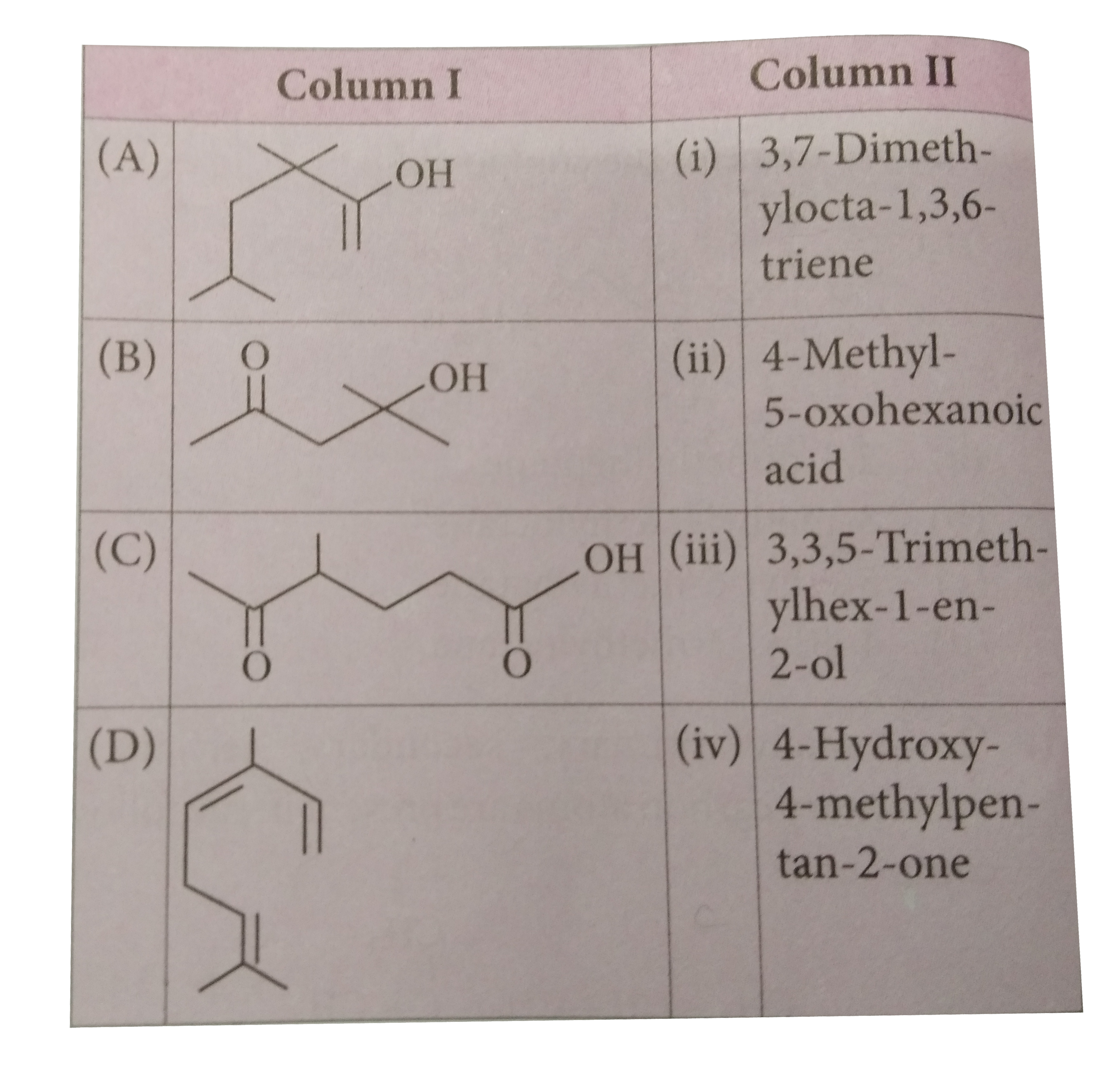
View SolutionMatch the complex ions given in column I with their colour given in column II and mark the appropriate choice .
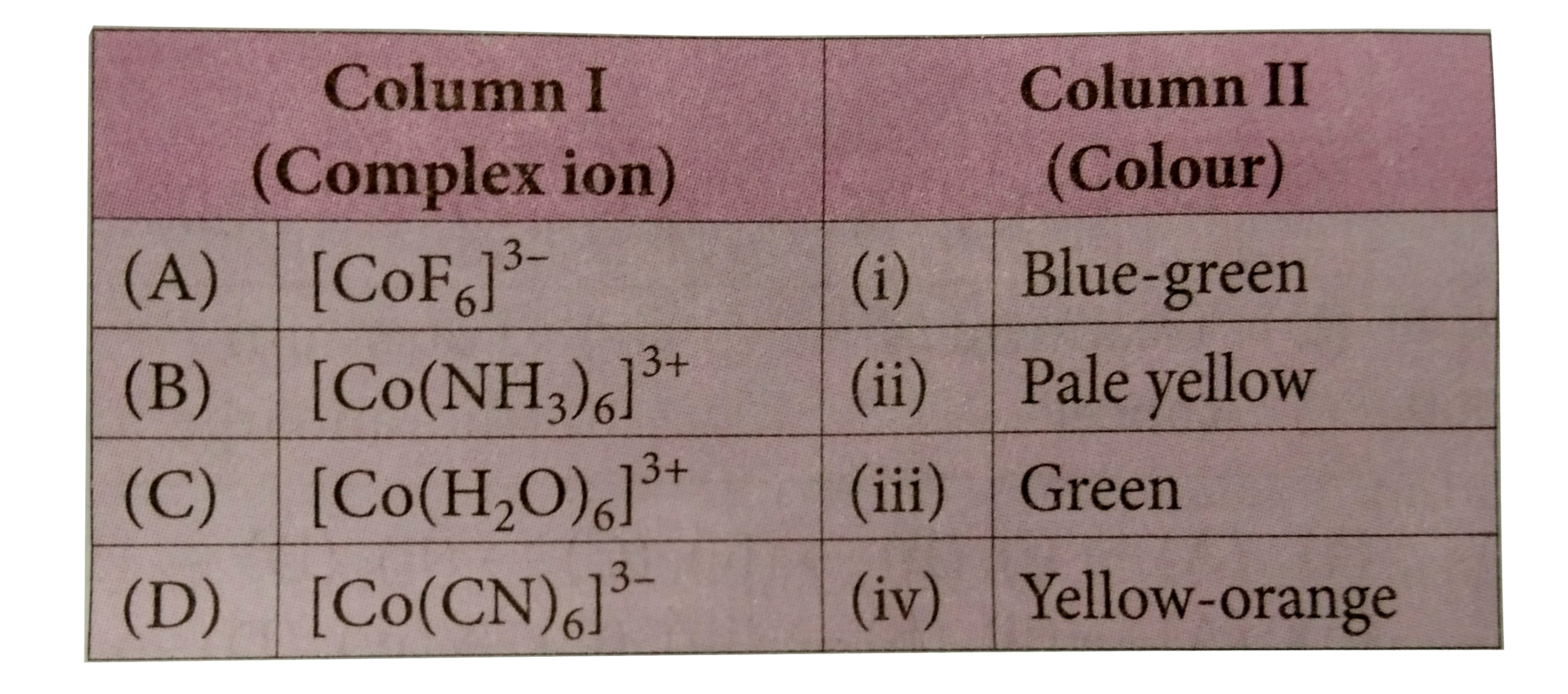
View SolutionMatch the atomic numbers of the elements given in column I with the periods given in column II and mark the appropriate choice.
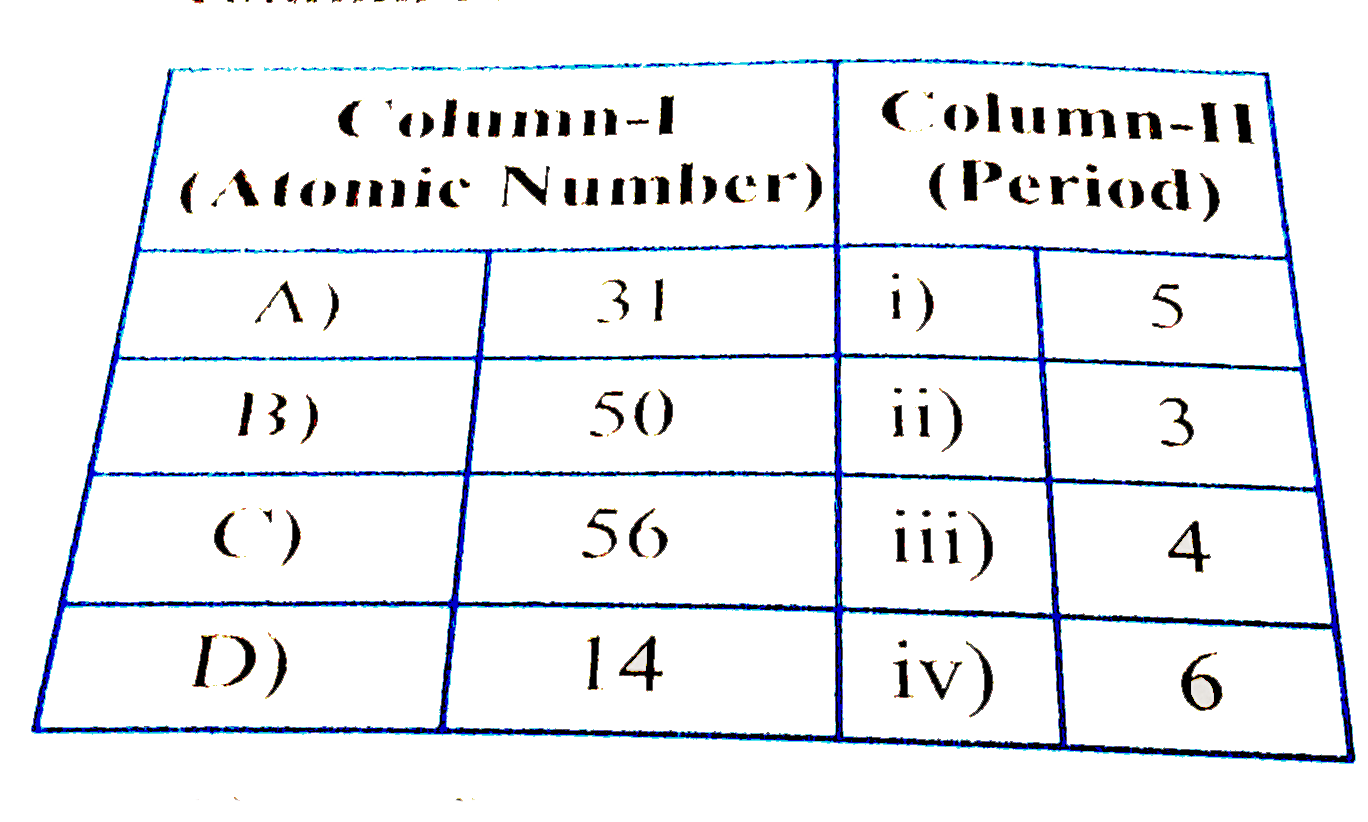
View SolutionMatch the atomic numbers of the elements given in column I with the periods given in column II and mark the appropriate choice.

View SolutionMatch the examples given in column I with the shapes of the compounds given in column II and mark the appropriate choice .
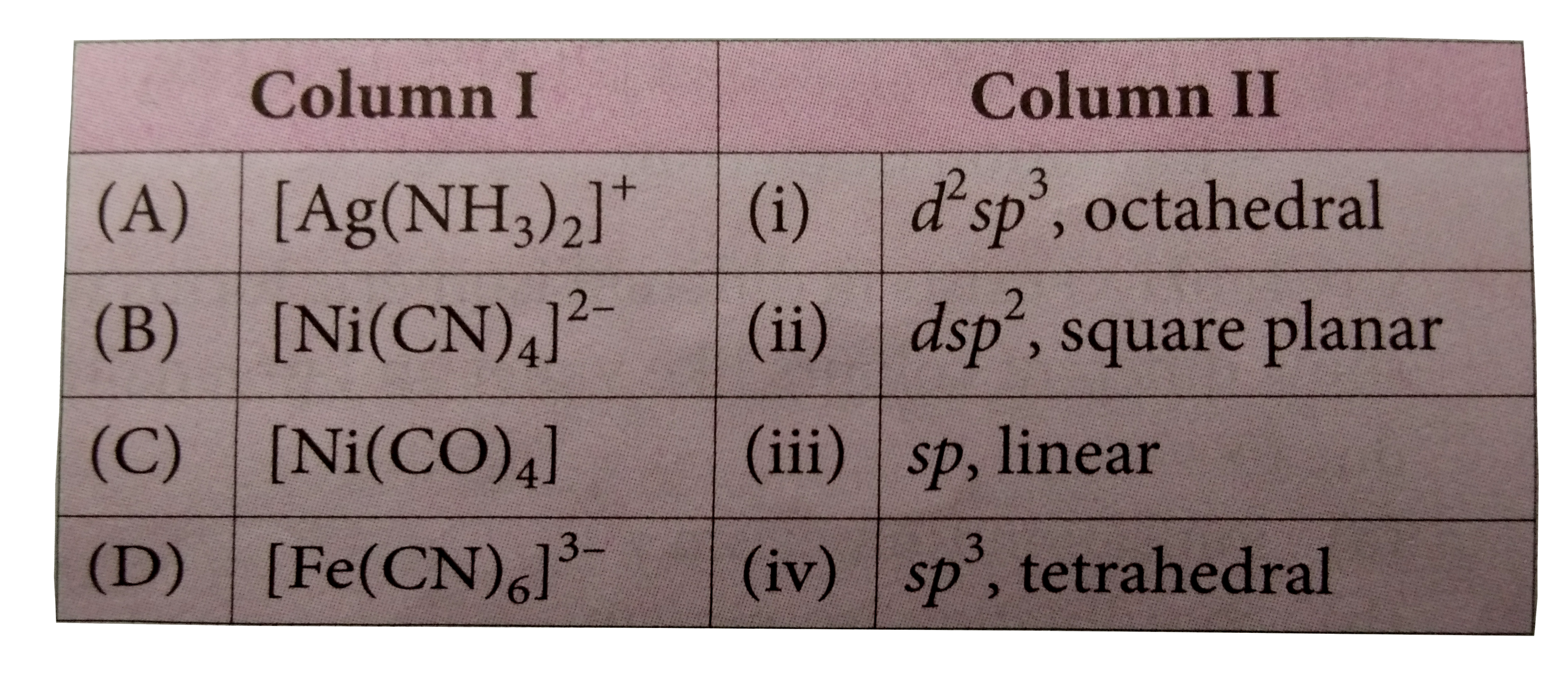
View SolutionMatch the plots in column I with their order in column II and mark the appropriate choice.
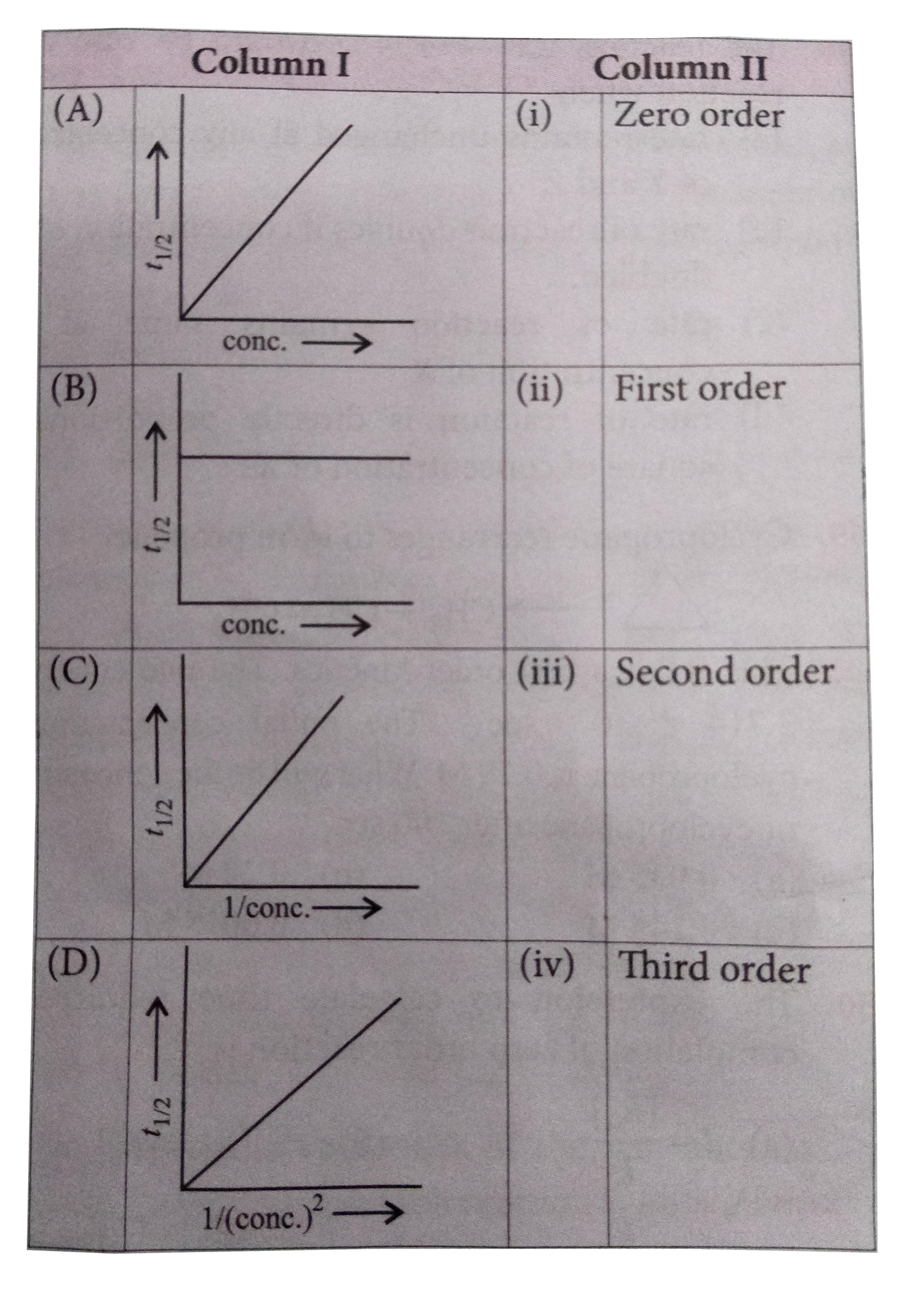
View SolutionMatch the compounds given in column I with oxidation states of carbon given in column II and mark the appropriate choice.
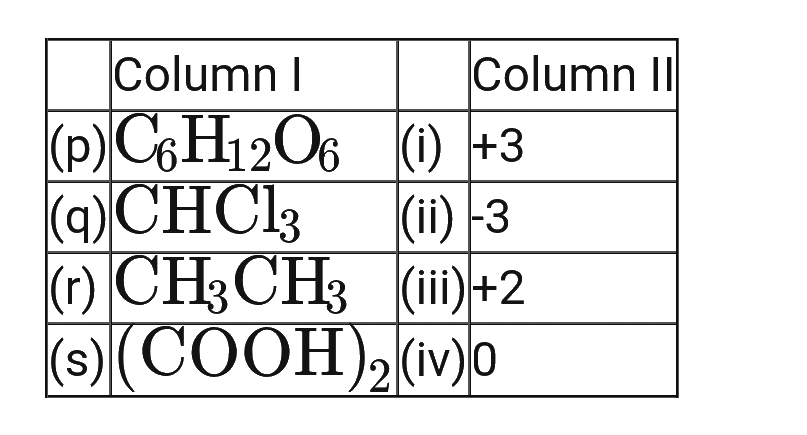
View SolutionMatch the column I and column II and mark the appropriate choice.
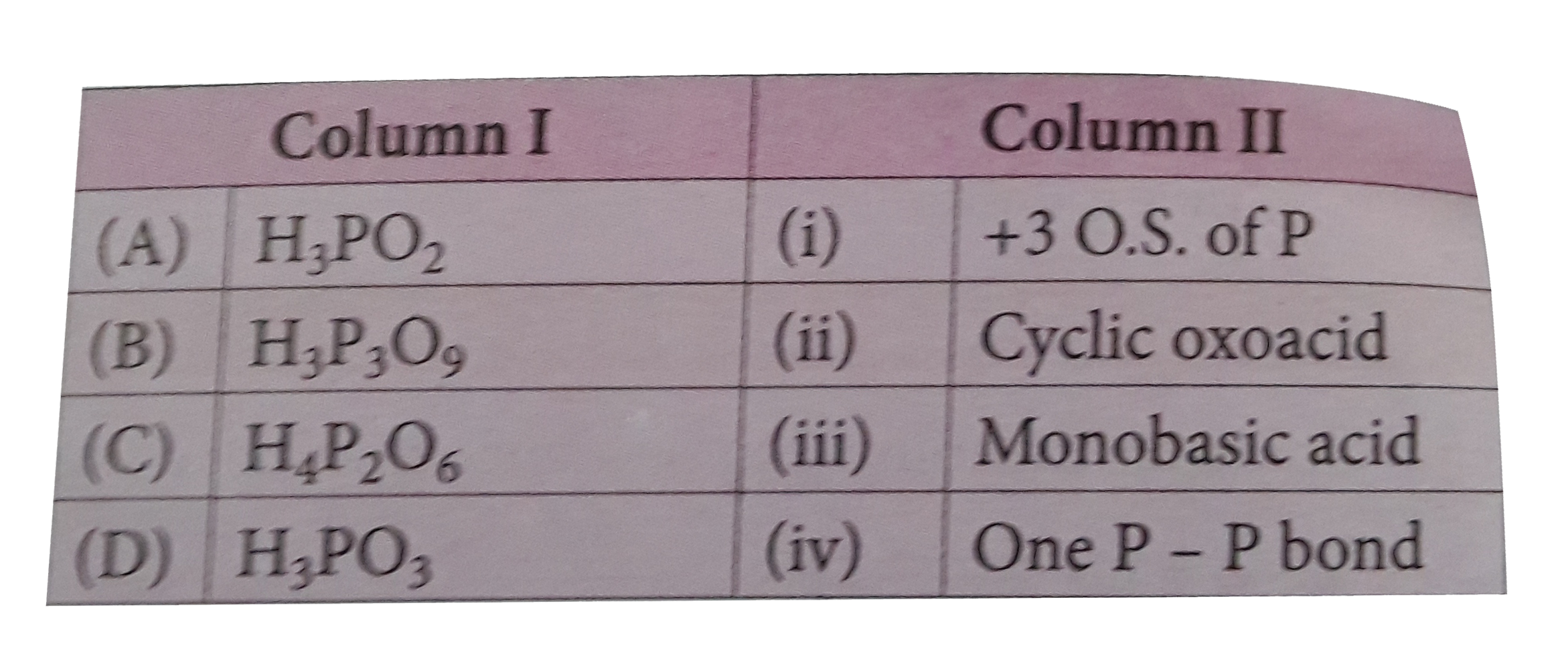
View Solution
